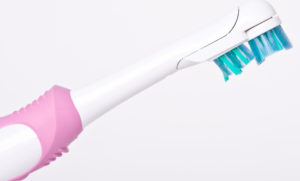by Jo Alex | Progress |
A small initiative
My interpretation from that appointment was that it was ok to continue what I had been doing but there was a little gentle pull inside of me to reconsider my habit. Alternatively, I decided to take a small initiative. I asked myself to keep an account of all my sugar bites since they were leaving marks in my mouth as well as other unintended places. The new plan ordered me to read the food labels, understand how many grams of sugar are recommended per day, and how many grams of sugar should be consumed per day.
While learning about the recommended allowances, a desire was born to dig into the history of sugar. What is sugar? When was it invented? How the heck did it get this far especially knowing it has chronic consequences?
What exactly is sugar?
Google generated 379,000,000 results as of May 2016 when you type in “what is sugar?” Many articles discussed different aspects of sugar but most agreed, including The American Diabetes Association that sugar is a carbohydrate and comes in two forms:
- Naturally occurring sugar – sources include milk, fruit, and vegetables.
- Processed sugar – sugar extracted from sugar cane or sugar beets then added to make cardamom cakes or peach pies.
According to the American Heart Association (AHA) “To tell if a processed food contains added sugars, you need to look at the list of ingredients. Sugar has many other names. Besides those ending in “ose,” such as maltose or sucrose, other names for sugar include high fructose corn syrup, molasses, cane sugar, corn sweetener, raw sugar, syrup, honey or fruit juice concentrates.”
The good news for me, at the time of the research, was that I was focusing only on ADDED sugars not the naturally occurring. In fact, I was not eating enough of the pure nature made, the good stuff. The bad news was that everything I ate on a regular basis contained the controversial granules.
History
My research revealed that the history of white sugar betrays a dark past. Sugar cane was known to man, dating back to 9000 BC in New Guinea (the exact date of origin is still debatable as I found different dates when I goggled). By 500 BC, India learned to process sugar from sugar cane. While invading India, Alexander the Great also becomes addicted to sugar in 327 BC and sent his new-found treasure to Persia and the Mediterranean. Some few thousand miles away, the Chinese emperor T’ai Tsung sends a team to India to learn more about sugar and found it was too good to keep to themselves and ends up trading it with the rest of the Asian countries, Middle East, and West Africa. In AD 641, the Arabs took control of Persia and found a way by irrigation to grow sugar cane on their new land. From Persia, sugar got shipped to its neighboring continents: East Africa and Europe. In 1493, Christopher Columbus introduced the little white granules called Zucchero or azucar or sugar to the new world, America.
In the late 1500s to 1600s, the British colonists referred to sugar as “white gold.” Sugar plantations were cultivated in the Atlantic islands, from the Canaries, Madeira, to Gulf of Guinea by the Spanish and the Portuguese. Some of the islands were close to the African coast, and the plantation owners began to use forced African slave labor in the plantations and then expanded the slave trade to their next settlement, the Americas. The Spanish established sugar plantations in Jamaica and Puerto Rico. The Dutch and Portuguese experimented in South America and noted that the sugar cane that was transplanted from Madeira to Brazil yielded a high supply of sugar. The high return on their investment allured the European settlers to do more of the same, even under the destructive conditions.
Watching the Portuguese and the Dutch, the British colonists saw that sugar was the next big cash crop and the demand for sugar in Europe was increasing. The colonists cultivated sugar plantations in the Caribbean in Barbados and Jamaica. Then after the purchase of the Louisiana Territory from France in the 1800s, the British colonists started growing sugar cane in the southern United States. Growing and processing sugar was excruciating work; the colonists adopted the same model that they had been using from a century before for their other crash crops: cotton and tobacco. They imported slaves from Africa to work in the sugar plantation. Historians debate that “profit from the sugar trade was so significant that it may have even helped America achieve independence from Great Britain…Sugar slavery was the key component in what historians call The Trade Triangle, a network whereby slaves were sent to work on New World plantations, the product of their labor was sent to a European capital to be sold and other goods were brought to Africa to purchase more slaves.”
To continue One Teaspoon of Success part 4 – Clarifying one teaspoon of sugar click here
by Jo Alex | Progress |
Two days later, images of fresh oven baked chocolate chip cookies; a single, chocolate glazed donut; and then back to the images of the warm chocolate chip cookies all popped up in my head unexpectedly. As imagined and unsolicited as that was, the smell of home baked cookies overwhelmed my head to the point I could not concentrate. It was around 6 p.m., drizzling, and gray outside. The dark skies affirmed what was in my head. Go get it now!

The nearest grocery store contained a good supply of different brands. I grabbed my favorite brand of cookie dough from the well-lit middle shelf of the freezer section, came home, and rolled the gooey dough into a ball and baked it to perfection in the oven at 350 degrees. If you are into scrumptious cookies like I am, and if you were here, you would not be able to leave this dwelling until you tasted one or two of these warm, crunchy, descended from heaven chocolate mannas.
While savoring each delicious morsel of the cookie, I immediately felt a weird sensation in my mouth. I tried to ignore it, thinking it is going to take some time for my teeth to get used to the filling I had just done. I avoided the sensation for a good 4 months and into early part of the New Year.
With the New Year came a new dental plan. The new insurance did not cover Dr. Tucker or Dr. Peterson because they were not in the insurance company’s network. The carrier’s network dentists near my workplace were not accepting new patients and the new plan offered only a few dentists accepting new patients near my residence. I evaluated if I should just keep my old doctor, but the out of pocket expenses to keep the last year’s dentist was pretty hefty, since “all out of network expenses are the patient’s responsibility.”
Without making too much fuss, I scheduled an appointment to see a new dentist, Dr. Frost. Upon arrival, Dr. Frost’s hygienist oriented me to their office policy, one being that they take extensive dental x-rays on new patients. Oh! Those x-ray bites felt uncomfortable. But, I got lucky in an odd way. Dr. Frost sympathetically told me that she found an ENORMOUS cavity on the side of one of my molars as she took her index finger and pointed to the spot on the x-ray. “WAIT A MINUTE, What?” muttering those words to myself.
For the past 7 months, I mentioned this to an experienced practitioner but it was completely missed on my dental exams and on the previous x-rays. Nothing against my past dentist; they did a great job in telling me about flossing and check ups. Dr. Frost provided disappointing and relieving news. “Let’s see if we can resolve this with a filling. If not, we may need to look into a crown or a root canal. I think there is a good chance that the filling would work. Would you prefer the white or silver filling?” Two choices presented, but I didn’t like either. Maybe more information was needed. “What is the difference between the two?” I asked as looking at her pearly white teeth and then her almond eyes. “The silver amalgam filling is the traditional filling but some are worried about potential mercury that is found in those fillings. The composite filling matches the color of the teeth.” “How long does each last?” I asked as if I only want to do this never again. “Silver has a good reputation of lasting a little longer but these composite fillings are pretty good too. Occasionally, they may need to be refilled.” She didn’t go in to the exact amount of years how long the filling would last but she felt pretty confident that it was going to last for a while.
As I reclined tensely in that aqua green dental chair in the cold bright room, waiting for my white filling, I had no choice but to think of all the times I had eaten tons of delectable cookies, decadent ice cream, and divine specialty pastries. The dentist then injected my molar with a long needle from a couple of different angles. The little sting from the needle got me thinking. I did not realize how bad my sugar habits were until the appointment with Dr. Frost. After the procedure, Dr. Frost asked me “What kind of tooth brush do you use?” “The manual tooth brush. I was using the electronic tooth brush but I stopped that because it was noisy.” She recommended me to use an electronic toothbrush. I was waiting for other recommendations from her, but she didn’t say anything more.

Though Dr. Frost never came out and said what the cause of the cavity was (because you eat too much unhealthy teeth food, genetics, misaligned teeth), I asked myself if I wanted to continue my habit of a high intake of sugar. Still, it was hard for me to even think about giving up my tiny addiction that kept putting me in a hole. Suddenly, I was distracted from my mental review by the petite dental hygienist who said, “Here are a few suggestions for you,” as she dropped a mini toothpaste and a toothbrush in a thick, shiny, white bag.
“Rinse your mouth with water immediately after eating.”
“Do regular dental check ups, suggestion is every 6 months.”
“Make sure the dental providers examine your mouth carefully.”
She then added, “You have a small mouth; so it was difficult for us to place the x-ray biting correctly in your mouth and that was probably why the first office did not see the cavity.”
“Well, thank you so much for being persistent in getting the shot from every angle even though we had some difficulty with it at first,” I said sincerely.
She continued, “If you have funny sensations to too hot or too cold, insist on taking care of it sooner rather than later.” The hygienist with pretty teeth provided practical tips without ever mentioning a word about not eating sugar, which left me some room for interpretation.
To continue to part 3 of One Teaspoon of Success

by Jo Alex | Progress |
On a recent trip to my new dentist, Dr. Frost, I received some bad news. I knew it all along, there was something lurking, but my last dentist, Dr. Tucker could not find it. Dr. Tucker’s office was always in a hurry; they had tons of patients to see and procedures to perform. Still, they did not dismiss my complaint. It’s just that their dental x-ray machines did not pick up what was causing the problem inside of my tooth. “There is an uneasy sensation every time I eat something sweet or drink something hot or cold,” I reported to the dental hygienist and then again to Dr. Tucker. The dental hygienist scanned my mouth with x-rays and Dr. Tucker examined my mouth with her curious light brown eyes. Neither the oral exam nor the x-rays detected anything to validate my complaint. Dr. Tucker afterward stated “If you continue to experience the sensations, please come back and see me.” In the meantime, I continued to do my usual activities in life, including enjoying my small addiction: sugar. Sugar in the morning, sugar after a quick lunch, sugar especially on the stressful long weekdays, sugar on hot summer days, sugar on the rushed weekends, and sugar on those earned vacation days, and I found them all to be well deserved. For a quick moment, I seriously considered my relationship with sugar but really could not come to an agreement with myself to give up the delightful sensations that it brings.
The next day, I woke up attempting to think rationally about my feelings regarding this long-term relationship that I had built with sugar and wondered “What if?” Breaking up a long-term relationship is painful. I felt unstable about severing a relationship that had comforted me my whole life. For right now, if anything, I’d rather treat the symptom than the cause.
A couple of weeks had passed, and I went back to Dr. Tucker’s office with the same complaints. Dr. Tucker was on vacation on the day of my appointment, and the covering dentist, Dr. Peterson, was filling in her place. After a brief greeting, I confessed to her in a half contrite tone, “I noticed that I eat a lot of sugar, you know food with lots of sugar.” The covering dentist nodded as she listened. Her indifferent nod compelled me to speak more.
“I am hoping I don’t have to give that up,” regretfully stating to her as if she were in control of the decision about my sugar future.
“Let’s take a look and see what is going on,” she said, as her white gloved hands holding pointy and round silver dental instruments moved closer to my lips. She asked me to open my mouth wider as she poked and tapped on a few teeth.
Honestly, I didn’t think she found anything but she was genuinely concerned that I came back with the same complaint a second time. From my history she could see that I had been an exemplary patient for them. For many years, I had come in for teeth cleaning every six months, for the occasional filling of a few cavities, and for replacement of a crown, never missing any appointments. Naturally, a valid complaint from a loyal patient warrants further investigation, which could only be rewarded by prodding my big mouth more!
To appease me this time, the covering dentist assumed the role of my primary dentist and said, “You know, looking closer, there might be a little hole on this tooth,” as she prodded around my “upper right tooth number 3.” She continued as if she were heading a major project, “We can fill this in few minutes; it is just a tiny cavity.” A simple head nod was sufficient for her next action. She then left the room and had the dental hygienist come in and prepare the area faster than a fast food drive through
service. Dr. Peterson then wasted no time. She gave me a quick anesthetic, and started to drill and fill the supposedly tiny hole. No less than sixty minutes later, the hygienist removed the rectangular blue dental bib from around my neck and said, “we are all done here.” Positive phrases spun in my head, Yea, Yea, Yea, no more cavities!
A couple of weeks later, my sugar crave hit me again. A handmade apricot pastry, a ginger cookie, and an eight-ounce latte with 3 teaspoons of sugar from the French bakery in town would satisfy the beast for the entire day.

To continue to Part 2 click here



